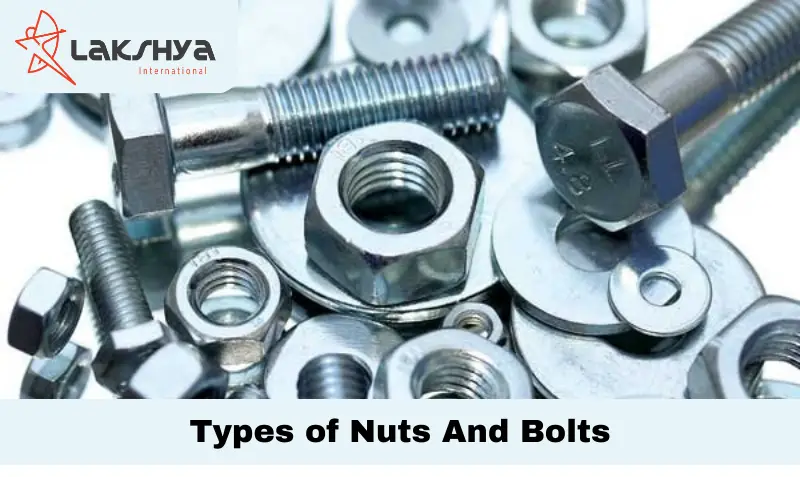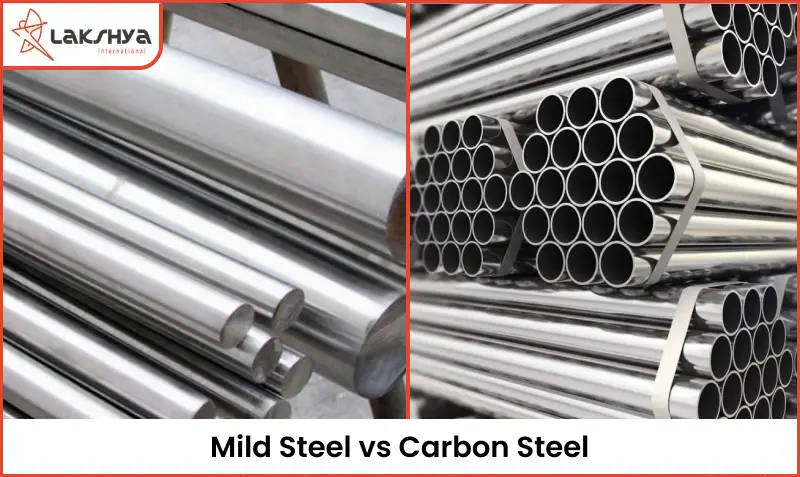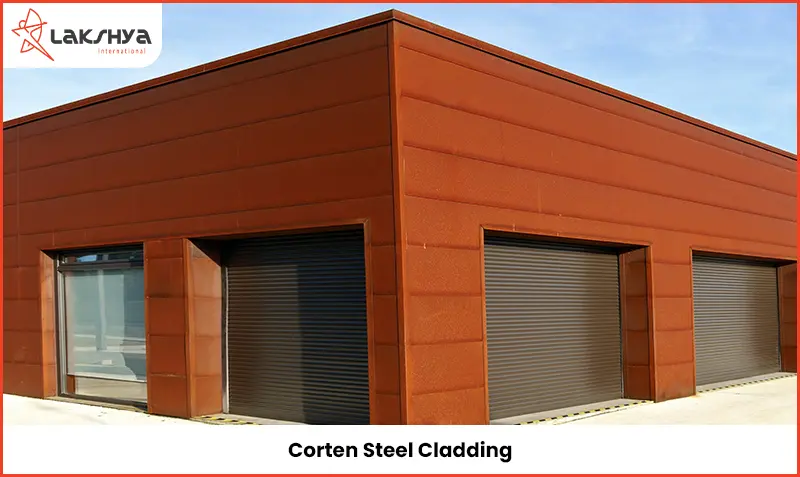Nuts and Bolts are a type of fastener that is used to secure or connect various materials together. These fasteners come in a variety of shapes and sizes, including hardware nuts, with the majority having machine threads. Bolts may be screwed into nuts using the threaded design, effectively retaining or securing materials in place. Important bolt types include eye bolts, wheel bolts, and machine bolts, while nuts include cap nuts, expansion nuts, and u-nuts. Material composition and finish have an impact on the look and performance of certain fastener types. This helpful blog will introduce you to the different types of nuts and bolts, as well as all the many types of bolt heads available.
What is Nuts and Their Uses
Fasteners called nuts are widely utilized and are available in various shapes and sizes to suit diverse applications. Standard nuts typically have a hexagonal shape, facilitating their attachment to a threaded bolt through driving or twisting. Locknuts differ from standard nuts as they possess an exterior thread configuration distinct from the interior thread, preventing loosening under conditions of vibration or heavy loads. Flange nuts, with their recessed base, offer additional bearing surface, ensuring a more even distribution of the load along the threads. Acorn nuts, also recognized as crown, cap, or dome nuts, sport an enclosed top that imparts a decorative finish. The availability of these different types of nuts hardware ensures that there is an ideal option for all your fastening requirements.
Types of Nuts
Cap Nuts, Castle Nuts, Coupling Nuts, Flange Serrated Nuts, Hex Finish Nuts, Hex Jam Nuts, Heavy Hex Nuts, Hex Machine Nuts, Hex Machine Nuts Small Pattern, Keeps-K Lock Nuts, Knurled Thumb Nuts, Nylon Hex Jam Nuts, Nylon Insert Lock Nuts, Prevailing Torque Lock Nuts, Slotted Hex Nuts, Square Nuts, Structural Heavy Hex, T-Nuts, Break Away or Shear Nuts, Tri-Groove Nuts, Barrel Nuts, Clip-on Nuts, Spring Nuts, Well Nuts.
Cap Nuts (Acorn Nuts):
- Dome-shaped top for a clean finish and preventing snags.
- Often used in decorative applications or where aesthetics matter.
Castle Nuts:
- Slotted top with two holes for inserting a cotter pin to prevent loosening.
- Commonly used on axles and other high-vibration applications.
Coupling Nuts:
- Used to join two threaded rods or create longer lengths.
- Often hexagonal on the outside for easy wrenching.
Flange Serrated Nuts:
- Flange provides extra bearing surface and prevents the nut from embedding in the material.
- Serrated edges grip the mating surface for enhanced vibration resistance.
Hex Finish Nuts:
- Standard hexagonal nuts with a smooth, finished surface.
- Used in general purpose applications where appearance is important.
Hex Jam Nuts:
- Thicker and taller than standard hex nuts, providing extra grip and strength.
- Often used in high-torque applications.
Heavy Hex Nuts:
- Extra thick and strong for heavy-duty applications.
- Used in demanding environments where vibration and stress are high.
Hex Machine Nuts:
- Standard hexagonal nuts for use with machine screws.
- Available in various sizes and thread sizes.
Hex Machine Nuts Small Pattern:
- Smaller version of hex machine nuts for use with smaller machine screws (under 1/4″ diameter).
Keeps-K Lock Nuts:
- Washer-like collar that spins freely and creates friction against the bolt to prevent loosening.
- Good for applications where vibration is present.
Knurled Thumb Nuts:
- Knurled grip surface for easy tightening by hand.
- Used for non-critical applications where tools are inconvenient.
Nylon Hex Jam Nuts:
- Nylon insert provides a self-locking mechanism to prevent loosening.
- Reusable and good for general purpose applications.
Nylon Insert Lock Nuts:
- Similar to nylon hex jam nuts, but with a wider nylon collar for increased locking strength.
- Suitable for high-vibration applications.
Prevailing Torque Lock Nuts:
- Deformed threads create friction against the bolt for superior locking performance.
- Ideal for critical applications where vibration and loosening are unacceptable.
Slotted Hex Nuts:
- Slotted head allows for screwdriver or spanner use in tight spaces.
- Useful for furniture assembly or other applications where access is limited.
Square Nuts:
- Square-shaped head with wrench flats for turning.
- Often used in wood and furniture applications
Structural Heavy Hex:
- Extra thick and strong version of square nuts for heavy-duty structural applications.
- Used in construction and other demanding environments.
T-Nuts:
- T-shaped nuts with a threaded flange that inserts into a slot or track.
- Used for creating adjustable fixtures and attachments.
Break Away or Shear Nuts:
- Designed to break at a predetermined torque to prevent overload damage.
- Used in safety-critical applications like aviation and automotive.
Tri-Groove Nuts:
- Three grooves on the nut head provide extra grip and prevent slippage.
- Useful for high-torque applications or oily environments.
Barrel Nuts:
- Cylindrical nut that threads onto a bolt or rod.
- Often used in furniture assembly or for creating quick-release connections.
Clip-on Nuts:
- U-shaped clip with internal threads that snaps onto a shaft or rod.
- Provides a quick and easy fastening method for non-critical applications.
Spring Nuts:
- Coiled spring design provides constant tension and vibration resistance.
- Used in machinery and other applications where vibration is a concern.
Well Nuts:
- Expandable nut that grips the inside of a hole for secure fastening.
- Used in sheet
What is Bolts and Their Uses
Bolts play a crucial role as essential fasteners, offering robust support for various bolted joints across a wide spectrum of applications. Diverse in shapes and sizes, bolts range from minute machine screws securing delicate machinery to substantial anchor bolts providing support for entire structures. Categorized based on their specific purposes, bolts can be structural, machine, woodworking, or designed for special applications. Structural bolts, typically crafted from steel with A325 or A490 grade material, find common usage in construction, fastening metal studs, and connecting steel columns to concrete beams. Machine bolts, distinguished by rolled threads, exhibit a capacity for handling higher tension loadings, often securing bearings in motors and machinery. Woodworking bolts, featuring shorter shanks and finished heads with square or hex sockets, prove ideal for connecting wooden components, particularly in projects such as furniture assembly. Special-application bolts encompass a variety of types, including clinch studs for enhanced gripping power, lag screws with threaded wedge ramping for extra holding strength, and clevis pins tailored for heavy-duty linkages between equipment pieces. The versatility of bolts ensures that there is a specific type designed for every job at hand.
Types of Bolts
Hexagonal Bolt, Square Head Bolt, Carriage Bolt, Round Head or Cup Bolts, T-Square Head Bolts, J-Bolt, U-Bolts, Eyebolt, Shoulder Bolts, Cylindrical Head, Elevator Bolt, Hanger Bolt, Lag Bolts, Anchor Bolts, Blind Bolts, Flange Bolts, Machine Bolts, Socket Head Bolts, Penta Head Bolts, Double End Bolts, Plow Bolts
Hexagonal Bolt:
- Most common type of bolt, with a six-sided head.
- Available in full or partially threaded versions.
- Used in a wide range of applications, from furniture to construction.
Square Head Bolt:
- Similar to a hex bolt, but with a square head.
- Often used in woodworking and concrete applications.
Carriage Bolt:
- Has a rounded head with a square neck that fits into a square hole.
- Used for applications where the bolt head needs to be flush with the surface.
Round Head or Cup Bolts:
- Have a low-profile, rounded head.
- Often used in decorative applications or where space is limited.
T-Square Head Bolts:
- T-shaped head with a square neck.
- Used for applications where the bolt head needs to be flush with the surface and provide additional grip for turning.
J-Bolt:
- L-shaped bolt with a threaded end.
- Used for anchoring objects to concrete or other masonry.
U-Bolts:
- U-shaped bolt with two threaded ends.
- Used for securing pipes, cables, or other objects to a surface.
Eyebolt:
- Bolt with a loop at one end.
- Used for lifting, towing, or securing cables.
Shoulder Bolts:
- Have a threaded shoulder between the head and the shank.
- Used for applications where the bolt needs to be positioned precisely
Cylindrical Head:
- Cylindrical head with a hex socket.
- Used in applications where a low-profile head is needed and a wrench cannot be used.
Elevator Bolt:
- Large, heavy-duty bolt with a square head.
- Used in elevator construction and other high-stress applications.
Hanger Bolt:
- Bolt with a threaded eye at one end.
- Used for suspending objects from a ceiling or other overhead structure.
Lag Bolts:
- Large, wood screw with a square head.
- Used for heavy-duty applications in wood, such as securing beams or joists.
Anchor Bolts:
- Bolts designed to be embedded in concrete or other masonry for secure fastening
Blind Bolts:
- Bolts that are installed from one side of a material without access to the other side.
Flange Bolts:
- Bolts with a flange under the head to distribute the load and prevent the bolt from pulling through the material.
Machine Bolts:
- General-purpose bolts with a hex head and full threads.
Socket Head Bolts:
- Bolts with a hexagonal recess in the head for driving with a hex key.
Penta Head Bolts:
- Bolts with a five-pointed star recess in the head for driving with a star key.
Double End Bolts:
- Bolts with threads on both ends
Plow Bolts:
- Large, heavy-duty bolts with a large head and a square neck.
- Used for securing agricultural implements to machinery.
Common Bolt Materials
Bolts and nuts are crafted from a diverse range of materials, encompassing both metals and polymers. Stainless steel stands out for its combination of strength and resistance to corrosion. On the other hand, polymer alternatives, though not as robust as stainless steel, prove to be a suitable option for withstanding chemical exposure. The predominant materials used include:
- Stainless steel
- Alloy steel
- Low carbon steel
- Medium carbon steel
- Titanium
- Polymers, such as nylon
Applications of Nuts and Bolts
Bolts and nuts constitute indispensable elements employed across various everyday tasks. Nuts, possessing internal threads, seamlessly attach to bolts with external threads. These fastening mechanisms play a pivotal role in securely joining materials, facilitating the efficient operation of machinery, structures, and other equipment. Bolts and nuts are prevalent in diverse industries, including construction, automotive, and manufacturing, serving multifarious purposes. Their applications range from securing automobile engines to stabilizing building foundations, showcasing the limitless utility of bolts and nuts. Ensuring safety, reliability, and stability, they have become integral components in our daily lives.
Bolts serve the purpose of fastening two or more pieces of wood, metal, or other materials together.
Nuts are employed to firmly secure bolts in position.
The combination of bolts and nuts with washers is common to evenly distribute loads and prevent loosening.
Bolts and nuts are available in various sizes and thread patterns to accommodate different uses.
Advantages of Nuts and Bolts
- Bolts and nuts exhibit a lower likelihood of coming loose.
A primary advantage of bolts and nuts lies in their reduced likelihood of loosening compared to other fastener types. The threaded connection formed by the interlocking threads of bolts and nuts creates a stronger bond between materials.
- Bolts and nuts offer versatility in applications.
Another benefit of bolts and nuts is their versatility in applications. They can effectively fasten metal, wood, or plastic components together, with a wide range of sizes and lengths catering to diverse projects.
- Installation of bolts and nuts is straightforward.
Bolts and nuts are relatively easy to install, typically requiring only a wrench or socket set for tightening or loosening. Moreover, their reusability makes them an economical choice for various applications.
- Bolts and nuts are readily available.
Widely accessible at hardware and home improvement stores, bolts and nuts are often offered in bulk at discounted prices. This availability and affordability make them a practical option for a broad audience.
Conclusion:
Different projects demand specific types of nut bolt. Understanding these distinctions is crucial for selecting the appropriate fasteners for the task at hand. Through a bit of research, one can easily access the information needed to ensure the success of their project.
Frequently Asked Questions:
- What is the meaning of the idiom “nuts and bolts”?
Nuts and bolts refer to the essential working parts or elements of a system, machine, or enterprise. It encompasses the practical workings of a mechanism or business, focusing on tangible details rather than theoretical or speculative considerations.
- What does fitting “nuts and bolts” mean?
When discussing the nuts and bolts of a subject or activity, one is addressing the specific and detailed practical aspects, emphasizing tangible and operational elements over abstract ideas.
- Who uses “nuts and bolts”?
Nuts and bolts are widely employed in various industries, including construction, manufacturing, automotive, and household applications. They play a crucial role in tasks such as furniture assembly, machinery construction, vehicle assembly, and numerous do-it-yourself (DIY) projects. These components come in diverse sizes and materials to cater to a broad range of needs.
- What is the difference between a “nut” and a “bolt”?
Shape and Design: A bolt is a threaded fastener featuring a head at one end and a threaded shank at the other. The head is typically larger and flat or rounded to facilitate turning using a wrench or other tools. On the contrary, a nut is a small, usually hexagonal-shaped object with a threaded hole in the center.
- What are “bolts and nuts” called?
Fasteners are utilized to securely join or fasten materials together. There exists a variety of bolts and hardware nuts, with most, if not all, bolt types possessing machine threads.
Read More:
What are the Difference Between Nuts and Bolts?: Learn about Nuts and bolts are two of the most common types of fasteners used in construction and engineering.




